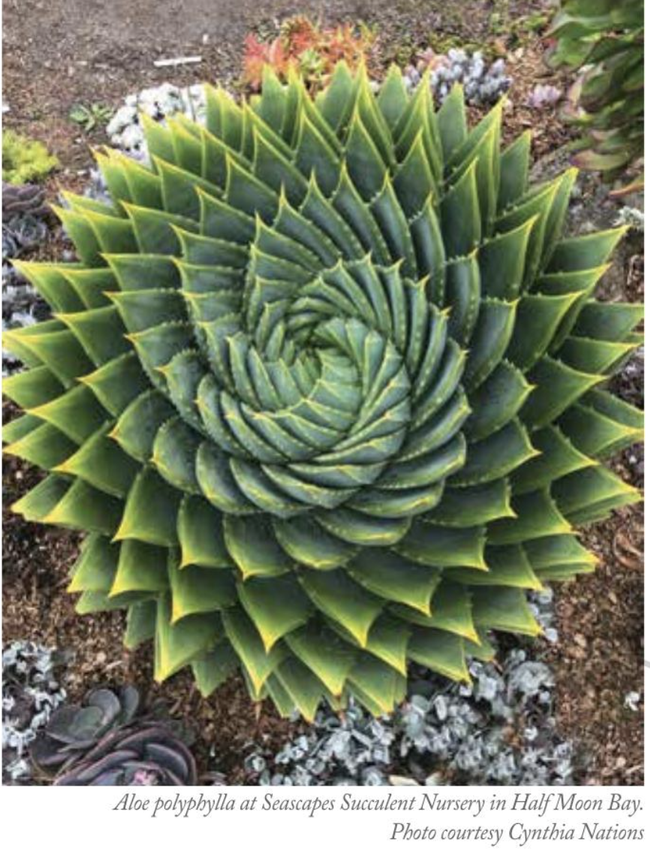- Author: Maggie Mah
Growing your own plants from seed has a lot of advantages: more variety, less cost and getting a head start on the growing season are just a few. Practicality aside, it's just plain miraculous to grow plants from seeds. The process of putting hard, dry, seemingly lifeless bits into soil and seeing the transformation to a living plant is fun, fascinating, and forms an amazing connection to the natural world. Some seeds can be sown directly into the ground, but others benefit from a gentler, more controlled beginning and February is the perfect time to get started. If the rows of colorful seed packets are enticing but the idea of growing anything from seed seems daunting, fear not. If previous attempts have been disappointing, fear not. Here's what you need to know to get growing:
How Seeds Work
It can be as big as a coconut or as small as a speck of dust, but every seed is a plant waiting to happen. On the outside is a protective covering known as a “coat.” On the inside is the “germ,” a tiny embryonic plant with a root, stem and one or more leaves. Surrounding the germ is nutritive tissue or “endosperm,” which sustains the incipient plant.
When soil temperature is right and sufficient moisture is available, the seed coat allows water and air to infiltrate, and the germination process can begin.
A tiny stem stretches upward, the Cotyledons unfold, turn green and disappear once the plant develops true leaves.
What Seeds Need
Three things are needed for germination: the right temperature, abundant moisture and sufficient oxygen. Too much or too little of any one of these factors will not lead to success.
Choices, choices
Unlike commercially grown seedlings, which are usually available in only one or two varieties, growing from seed gives you a much wider selection of varieties and allows you to select plants for conditions in your location. When selecting tomatoes and other seasonal crops, pay close attention to “Days to Maturity,” the term for the number of days it will take to produce fully ripened or mature produce. Varieties with fewer days to maturity are best for cooler, foggier areas. Be sure to use seeds from a reputable supplier and check the expiration date before purchase.
Plan Ahead
Decide the number of plants you want to end up with when your seedlings are ready to transplant. Factor in that some seeds will fail to germinate and that some seedlings will not be sufficiently robust to “graduate” to the garden.
In general, seeds should be started 6-8 weeks before the date you want to transfer to the garden. Starting too early can easily lead to your seedlings becoming root-bound so if in doubt, wait a week or two. Please refer to UC Master Gardener Planting Calendar: https://smsf-mastergardeners.ucanr.edu/Edible_Gardening/
For ornamentals, pollinators and other non-edibles that can be started from seed indoors, refer to the seed packet for timing.
Seed Starting Basics
Soil
Use a blend specifically formulated for starting seeds. It should be light and uniform in texture, sterile and nutrient rich. Never use “native” garden soil and avoid regular potting soil. Make sure soil is evenly moist prior to seeding.
Containers
Just about any kind of container will work if it is clean and has drainage holes. “Clam shell” food containers, yogurt cups and other plastic packaging can be re-purposed along with nursery “six packs” and 4-inch pots. Wash, rinse and sterilize by spraying with a solution of 1 part chlorine bleach to 9 parts water and air dry before using. You can avoid containers altogether by using soil blocks. (See below for more information.)
Seeding
Fill your containers about 2/3 full of soil and follow seed packet directions for planting depth and spacing. Seeds that are started closer together will require “up-potting” and/or thinning at a later stage. Note: some plants, such as squash, don't like that kind of disruption and should stay in individual containers until transplanting time.
Watering
Moisture is essential for germination and watering is best done from the bottom to avoid dislodging newly planted seeds. Place seeded containers in a solid tray that will hold water. (Concrete and mortar mixing trays are ideal.) Add water to the bottom of the tray to a depth of approximately ½ inch. Seed containers should be checked frequently to make sure the soil is evenly moist but not wet or soggy. Adjust the amount of water added to the tray to maintain adequate moisture while avoiding standing water for more than a few hours. Clear plastic covers help to retain moisture as does a light topping of vermiculite.
Provide light and warmth
Find a spot with bright, indirect light such as a sunny window and where temperature is between 65 and 70 degrees during the daytime and 55-60 at night. If the perfect spot is not to be found, consider using grow lights and specially designed heating mats for plant propagation. Both are inexpensive and energy efficient.
Growing
Maintain proper moisture, light and warmth and in 6 to 21 days, seedlings will start to emerge. First to appear are the tiny green cotyledons that have burst forth from the seed. As soon as the true leaves appear, seedlings can be “up-potted” to larger containers.
“Hardening Off”
Young plants that have been grown indoors require gradual exposure to outdoor conditions. About two weeks before transplanting and when night time temperature has reached 50°, start the process by moving plants outside to a shaded location during the day and bringing them inside at night. After that, gradually increase the amount of sun exposure during the day and allow plants to remain outside at night.
Transplanting
When plants have been hardened off, it's time to plant! Prepare beds well ahead of time, then dig holes the size and depth of the seedling pot (deeper for tomatoes). Allow adequate spacing for the size of the mature plant. Invert the pot, allowing the seedling to pass through your fingers and gently grasp the root ball. Invert and set the plant into the hole. Gently tamp down, adding more soil if necessary. Water carefully and finish by adding a layer of mulch.
It's no wonder that seeds and the act of planting are the basis of so many sayings and inspirational words. Whatever seeds you decide to sow, you will be part of an amazing, eternal process of renewal.
Any questions? Contact the Master Gardener Helpline: http://smsf-mastergardeners.ucanr.edu/
For more on soil blocking: https://smsf-mastergardeners.ucanr.edu/?blogpost=55580&blogasset=125102
For more on soil preparation: https://mg.ucanr.edu/Gardening/Vegetable/Preparing/SoilImprovement/
Maggie Mah is a UC Master Gardener who is fascinated by seeds.
UC Master Gardeners of San Mateo-San Francisco County are volunteers who are trained under the auspices of the University of California to provide science-based information on plants, horticulture, soil and pest management at no charge to the public. For more information and to find out about classes and events in your area, visit our website where you can also sign up for our newsletter: http://smsf-mastergardeners.ucanr.edu/

- Author: Maggie Mah
It's January and, although it may be cold and damp, the days are getting longer by a few seconds each day—just enough additional daylight to stir a gardener's blood. While plants and soil are taking their winter rest, it's a great time for us humans to take stock, think about new possibilities and contemplate how we might do things a bit differently in the year ahead. Here are four ideas for doing just that in 2024:
Adopt an Edible Aesthetic
At some point in our history, areas for growing vegetables and fruits became separated from the rest of the garden landscape. Now, this norm is being shaken up by an idea known as “foodscaping” or “ornamedibles,” wherein edibles are intermixed with ornamentals to grow together in an attractive and harmonious way. It's not only an intriguing horticultural idea, but also a way to grow food almost anywhere.
Other than making sure that the plants you select have the same requirements for sun, soil, irrigation and drainage, the possibilities are endless.
Where garden space is limited or not available at all, this concept affords anyone with enough space for a pot or hanging basket the ability to grow their own fresh food, often with spectacular visual results. Imagine a shrubby blueberry bush surrounded by bright pink petunias or chartreuse/lime green lettuces and purple violas.
Edible plants come in many forms--upright, trailing and vining-- so they are perfect for providing the “thrills” and “spills” needed for dramatic potted plant arrangements.
Pare Down on Plastics
Even small garden projects can generate a lot of plastic waste and you may be surprised to learn that most curbside waste recovery programs don't recycle those ubiquitous black plastic pots. Unfortunately, those items end up in the landfill and, since they are meant to be quite durable, they will be around for a very long time. The good news: home improvement stores offer active recycling programs for plastic pots and other materials that are difficult to recycle. Here are more ways to shrink plastic waste:
• Shop for plants in pots made of compostable or biodegradable materials.
• Grow plants from seed and circumvent the need for pots altogether by making soil cubes.
• Use wooden shims instead of plastic markers to identify plants and seeded rows. Use a soft pencil to write plant names on the shim as felt markers will fade with exposure to UV light. When it's time to replant, toss the shims in the compost where they will break down and add carbon to the mix.
• Use string made of natural fiber instead of plastic plant ties.
• Avoid the use of landscape “fabrics” to control weeds. These materials are another form of plastic, are not effective at controlling unwanted vegetation and are damaging to the soil. Planting ground covers and using organic mulch is a much better and sustainable way to suppress weeds.
• Protect plants from birds, squirrels and insects with metal mesh or fabric row covers instead of plastic netting.
Become Firewise
There's no better time than the dead of winter to get ready for fire season! Starting early reduces stress and makes the task a lot less daunting. It's also a much better time of year to make changes to your landscaping as most plants and trees are not actively growing.
Get started by drawing an imaginary line five feet away from the perimeter of your house. Remove anything flammable from this area, including plants. That camellia bush adjacent to the front window? Yes, sorry! It needs to be moved. But the good news is that with care, it will be more able to take hold in a new location at this time of year. Also-remove any flower buds so that the plant will put more energy into establishing roots. Any worries about curb appeal can be remedied by indulging in decorative ceramic and metal sculptures, intriguing rock arrangements, etc.
Now is also a great time to consider existing vegetation past the 5-foot perimeter. Consider removing more combustible plants with fire-resistant varieties.
Other fire preventive measures include getting rid of dead vegetation, removing tree limbs up to 10 feet above the ground, pruning back any branches within 10 feet of other trees and readjusting plantings to create groupings rather than continuous lines.
Provide for Pollinators
Pollinators are at risk worldwide due to habitat loss, improper use of pesticides, herbicides and other factors. But if you provide plants for pollinators, they will come, and you will have a garden that buzzes with life. What is a “pollinator plant?” Flowering annuals, perennials and shrubs (especially natives) that produce nectar and pollen are considered plants that will support a pollinator population. Pollinators themselves come in a variety of sizes and shapes including bees, beetles, hummingbirds, butterflies, moths and many more.
A pollinator garden can be large or small—even a planter or pot can be a source for beneficial insects. Establishing a pollinator garden can be as simple as sowing a few handfuls of seeds and needn't be elaborate but the more pollinator plants you can add to your garden, the better. Our mild winter climate and long growing season allows us to provide a wide variety of plants for most of the year, an important factor in sustaining a healthy population of pollinators.
Fun fact: Bees don't just buzz for the heck of it or because they might be irritable--they buzz for a reason. The pollen in some plants is harder for the bees to extract so the buzzing you hear is vibration created by the bee to help release the pollen. This process (called “sonication”) is accomplished by the bee disengaging its flight mechanism and rapidly moving its wings.
Another fun fact: Bumblebees buzz in the musical key of middle C. Evidently, they have perfect pitch.
Wishing you and your garden a happy, healthy New Year!
For more on recycling plastic plant containers: https://corporate.homedepot.com/news/sustainability/plant-it-again-plant-pot-recycling-program and https://corporate.lowes.com/newsroom/stories/fresh-thinking/are-you-wishcycler
For more on soil blocking: https://smsf-mastergardeners.ucanr.edu/?blogpost=55580&blogasset=125102
For more on how to become Firewise: https://smsf-mastergardeners.ucanr.edu/resources/Firewise_landscaping/
For more on pollinator plants: https://smsf-mastergardeners.ucanr.edu/Pollinator_Plant_List/
Maggie Mah is a UC Master Gardener who is looking forward to longer days and doing new things in the garden.
UC Master Gardeners of San Mateo-San Francisco County are volunteers who are trained under the auspices of the University of California to provide science-based information on plants, horticulture, soil and pest management at no charge to the public. For more information and to find out about classes and events in your area, visit our website where you can also sign up for our newsletter and contact our Helpline: http://smsf-mastergardeners.ucanr.edu/

- Author: Maggie Mah
Last winter's epic rainstorms have caused many of us to think about what we can do to mitigate the impact of heavy downpours on our communities. As it happens, the impervious surfaces that keep us dry and mud-free (our homes, patios, driveways, etc.) also keep water from seeping naturally into the ground. Instead, rainfall is typically managed by gutters and downspouts which collect surface water and funnel it into drains and culverts. Unfortunately, what comes along for the ride are a lot of pollutants: pesticide residue, heavy metals, bacteria, etc., all of which end up contaminating our waterways and potable water supplies. According to the US Environmental Protection Agency, rainwater runoff accounts for an estimated 70% of all water pollution. Now for the good news: there's a simple solution to keeping that water from going down the drain that will not only beautify your landscape but do great things for the environment, too. It's called a “rain garden.”
What is a Rain Garden?
Known more technically as “bio-retention cells,” rain gardens are landscaped areas designed to capture and retain runoff water where it can be slowly absorbed into the surrounding soil. In the process, the interaction of plants and soil microbes makes significant improvements in the quality of the water, reduces flooding and helps to recharge groundwater. A well-constructed and maintained rain garden can remove up to 90% of the pollutants present in rainwater runoff and can absorb significantly more water than conventional landscape areas such as lawns. Unlike natural areas that are slow to drain, the water in a properly designed and constructed rain garden will allow water to infiltrate in 48 hours or less, which means mosquitoes will not have enough to time to breed.
How Rain Gardens Work
The name may conjure up watery images of ponds and lily pads but “rain gardens” are dry most of the time and blend seamlessly into the existing landscape. During a rain event, runoff is directed to a location in the ground that has been excavated to be slightly shallower than the surrounding area, forming a basin to temporarily contain a quantity of water. In the “basin” are plant varieties that are strategically selected and placed to survive the extremes of periodic flooding and drought conditions. When water flows into the rain garden, it irrigates the plants while soil microbes go about the job of breaking down pollutants and providing nutrients for the plant roots to absorb. As the plants grow, they provide an attractive habitat for birds, butterflies, and other animals.
Size Matters
How big should a rain garden be? Ideally, it should be large enough to capture and contain the water that comes off the roof of your home, patio or other paved area. During a storm that dumps an inch of rain, about 200 gallons of water will be shed from a 400 square foot roof. This would require a rain garden approximately 20% of the size of the roof or about 50 square feet. Size calculations will vary according to soil types and other factors but even a small rain garden can make a big difference.
Site Selection
The location of your rain garden should be at least 10 feet away from structures and in an area where water from downspouts or drains can be directed. This can be in a natural depression, flat area or gentle slope no greater than 12%. Ideally, the location should receive full sun to partial shade for plants to do their best and soil must be able to percolate water at the rate of approximately ½ inch per hour. Depending on the terrain, the long side of a shape should be arranged perpendicular to a slope to catch as much water as possible. Areas with heavy clay soils, trees and tree roots, utilities, septic tanks, drain fields and well heads are to be avoided.
Design & Construction
Rain gardens can be any shape, size or style. They are simple to construct and usually require little in the way of supplies and equipment. If you have a shovel and the willingness to do some digging, you can probably do it yourself. You will need plenty of organic compost to amend the soil, which is essential for increasing infiltration and promoting plant growth. Depending on the type of soil, other amendments might be needed to facilitate drainage. After plants are in place, you will need to top everything off with a layer of organic mulch to help retain moisture and suppress weeds. Maintenance is also simple: a bit of weeding, pruning and adding more mulch is usually what's required.
Plants and Planting
Think of a rain garden as having 3 different zones: “bottom,” mid slope and perimeter or berm. Plants in the bottom zone need to tolerate periods of flooding and will receive the most water for the longest time. Plants on the next level need to be a bit smaller and must also withstand moisture but for shorter duration. At the top or outermost zone are plants that are more typical of California and Mediterranean style gardens. Since our climate is dry for much of the year, all of the plants you select will need to do well with minimal water.
To slow the velocity of water entering the “basin,” rain gardens should be more densely planted than other types of landscaped areas. Grasses, sedges and other plants that form “clumps” are key to holding soil, supporting other plants and preventing erosion. Many California natives are well suited to these conditions but non-native plants with similar characteristics are also good options.
Plant Recommendations
- “Bottom” plant varieties include: douglas Iris (Iris douglasiana), creeping wildrye (Elymus triticoides), yerba mansa (Anemopsis californica) and torrent sedge (Carex nudata).
- Mid slope varieties: salt grass (Distichlis spicata), common or spreading rush (Juncus patens), wood rose (Rosa gymnocarpa).
- Top level or berm varieties: common yarrow (Achillea millefolium), ceanothus (Ceanothus spp.) California fuchsia (Epilobium canum), pitcher sage (Salvia spathecea).
More Solutions
If a rain garden isn't possible, there are other ways to retain direct and utilize excess rainwater. Rain barrels attached to gutter downspouts collect and store large amounts of water very quickly. Swales, rock-lined areas that mimic streambeds, can divert water, promote infiltration and add interesting landscape features. Swales can also be used in conjunction with rain gardens.
Rebates for rain gardens and rain barrels are available to San Mateo County residents. For more information, see San Mateo Countywide Water Pollution Prevention Program under “Resources” below.
To see a great video on residential rain gardens, go to:
https://www.youtube.com/watch?v=x40wEIQglqw&list=PLLgjyMTf6lO0oYUxC8gLzh_NjVzk98MwE&index=5
Resources
-UCANR Coastal California Rain Gardens: https://anrcatalog.ucanr.edu/pdf/8531.pdf
-San Mateo Countywide Water Pollution Prevention Program: https://www.flowstobay.org/rain-gardens-your-next-landscaping-project/
-US Environmental Protection Agency: https://www.epa.gov/soakuptherain/soak-rain-rain-gardens
-The Xerxes Society: https://xerces.org/blog/rain-gardens-are-winwin
-Groundwater.orghttps://groundwater.org/wp-content/uploads/2022/11/neb1.pdf
Maggie Mah is a UC Master Gardener who is in awe of nature's power and wisdom hopes lots of people will be encouraged to build rain gardens.
UC Master Gardeners of San Mateo-San Francisco County are volunteers who are trained under the auspices of the University of California to provide science-based information on plants, horticulture, soil and pest management at no charge to the public. For more information and to find out about classes and events in your area, visit our website where you can also sign up for our newsletter and contact our Helpline: http://smsf-mastergardeners.ucanr.edu/

- Author: Cynthia Nations
- Editor: Maggie Mah
What is a lawn? For many of us, those traditional squares of lush, green turf grass have not only been a part of the landscape, but also an icon of our American culture for generations. A manicured lawn symbolized prosperity and respectability. Learning how to mow was a rite of passage as well as a source of income for many enterprising kids. Now, with the increasing need for sustainability in all aspects of daily life, the thirsty, fertilizer-intensive lawn has become a focal point for change. Some homeowners are doing away with lawns entirely, opting for native plantings or succulents. But for those who love a beautiful expanse of green, there are sustainable alternatives that can thrive in a coastal environment and as well as contribute to fire safety.
“Greener” Grasses
Low-growing plants that replicate the look and feel of typical turf grasses are referred to as “grass alternatives.” Many are drought tolerant and require significantly less water than traditional lawns. This helps lower water bills and conserve an important natural resource. Grass alternatives generally require less maintenance compared to traditional grass lawns which means less time, effort, and money is needed to keep them healthy. An added benefit for allergy sufferers: grass alternatives don't produce pollen the way grass does. Some varieties have extensive root systems that help to stabilize soil and prevent erosion. Importantly, grass alternatives promote biodiversity by providing food sources and habitats for pollinators and other local wildlife. Lawn alternatives offer many types of unique and attractive landscaping options with a variety of colors, textures, and heights that can be included in rooftops and other locations where traditional grasses might struggle to grow.
Meandering Meadows
Meadow gardens are groups of plants, often natives, that are arranged and allowed to naturalize, thereby simulating a wild meadow. Flowering plants are often included but grasses are a key element. Creating a meadow garden allows you to include some of the coast side region's natural beauty at your doorstep and transform your outdoor space into a serene and bio-diverse haven. As you create your garden design and decide on the plants you will use, consider the height and width of each plant, and arrange them like a meadow with taller plants placed toward the back and shorter ones near the front. This will create depth and visual interest in your garden.
Fire Safety
In our current milieu, protecting your home from wildfires is crucial, and selecting grass alternatives can play an important role in reducing the spread of fire. Current recommendations call for non-flammable hardscaping materials like gravel, pavers or stone pathways within the first 5 feet away from your home to reduce the risk of ignition. Moving farther out, using green, low-growing vegetation, fire-resistant building materials and ensuring plants around the home are properly spaced, pruned and healthy can significantly reduce fire risks.
Here are some grass alternatives that are well-suited to the Northern California coast and are environmentally friendly:
Kurapia (Lippia nodiflora) is a low-growing, herbaceous, perennial groundcover belonging to the Verbenaceae family. Its dense and sturdy structure gives it excellent soil stabilization, aiding soil erosion, providing strong wee suppression, and tolerates a wide range of soil types, pH levels, and salinity.
Fescue (Festuca californica) is a native grass that thrives coast side and adds a graceful and natural appearance to a garden. It is an excellent choice for homeowners looking to create a meadow-like landscape, and it is drought-tolerant, low-maintenance, and (after established) requires minimal watering.
Idaho Fescue (Festuca idahoensis) shares many of the same qualities as California fescue including drought tolerance and adaptability to coastal conditions. Its clumping growth habit reduces the need for frequent mowing and maintenance.
Buffalograss (Buchloe dactyloides) is drought tolerant and enjoys sunny areas. Buffalo grass can be mowed to create a manicured look or left unmowed for a more natural appearance.
Pacific Beach Strawberry (Fragaria chiloensis) is a perennial native California species that grows 4-8 inches high with dark green leaves and produces small strawberries in the fall.
Blue Grama Grass (Bouteloua gracilis) is a drought tolerant native grass that forms dense clumps that resist fire spread. It requires little maintenance once established.
Muhly Grasses (Muhlenbergia) are ornamental and add aesthetic value to your garden. They are generally fire-resistant.
Ground covers: There are several hardy, drought tolerant groundcovers that reduce fire danger and conserve water. Creeping thyme, ice plant (Delosperma), or native sedges (Carex species) are good choices. Succulent plants, including many varieties of Sedum, have fire-resistant properties due to their water-filled leaves and can be used as ground covers and in rock gardens.
Landscaping with grass alternatives on the Northern California coast aligns with the region's commitment to environmental conservation and sustainability. Whether you decide on native grasses, ground covers, or meadow plantings, you can create a beautiful and eco-friendly garden.
Resources:
California Center for Urban Horticulture: https://ccuh.ucdavis.edu/kurapia
UC Marin Master Gardeners: https://marinmg.ucanr.edu/PLANTS/LAWN_AND_ALTERNATIVES/#alternatives
Cynthia Nations is a UC Master Gardener who planted Kurapia in her El Granada garden in 2017 and has appreciated its beauty ever since. This article was edited by UC Master Gardener Maggie Mah.
UC Master Gardeners of San Mateo-San Francisco County are volunteers who are trained under the auspices of the University of California to provide science-based information on plants, horticulture, soil, and pest management at no charge to the public. For more information and to find out about classes and events in your area, visit our website where you can also sign up for our newsletter and contact our Helpline: http://smsf-mastergardeners.ucanr.edu/

- Author: Cynthia Nations
- Editor: Maggie Mah
Enjoyment of the world around us and in our gardens is a deep-rooted and multifaceted aspect of the human experience. The serenity of a well-maintained and organized green space that includes vibrant colors of blooming flowers, branching of trees, the arrangement of seeds in many plants, and the arrangement of leaves on a stem are some of the many reasons why people derive such pleasure from gardens. The human brain has evolved to recognize patterns in the environment, and the Fibonacci sequence and golden ratio can be seen as pleasing patterns that are both simple and complex.
Current scientific research finds evidence that Fibonacci numbers and Golden Ratio mathematical principles appear in many patterns and structures in nature. The Fibonacci sequence is a mathematical pattern where each number is the sum of the two preceding numbers (e.g., 0, 1, 1, 2, 3, 5, 8, 13, 21, 34, etc.). The golden ratio is a mathematical ratio of approximately 1.618:1 and is often represented by the Greek letter phi. The attraction to the Fibonacci sequence and golden ratio in gardens is likely a combination of their natural occurrence in the environment and their ability to create pleasing patterns and proportions that evoke a sense of balance and harmony. In addition, the Fibonacci sequence and the golden ratio are associated with growth and abundance, making them symbolic of prosperity and success.
The beauty of flowers, carefully arranged and nurtured, often follows the Fibonacci sequence in the arrangement of their petals and seeds. Pattern arrangement adds an extra layer of fascination to the world of flora. Many flowers exhibit a petal count that corresponds to Fibonacci numbers. For example, lilies often have three petals, buttercups have five, Shasta daisies have 21, and dandelions have 34. Other examples include the White Calla Lily (1 petal); Euphorbia (2 petals); Iris (3 petals); Larkspur, Hibiscus, and wild Rose (5 petals), Black-eyed Susan and Delphiniums (8 petals); Pyrethrum Daisy (34 petals); and Michaelmas Daisies (89 petals). One of the most noticeable manifestations of the Fibonacci sequence in flowers is seen in the spirals of Sunflower seed heads. The seeds of these flowers form spirals that radiate from the center. The numbers of these spirals, when counted in opposite directions, are often consecutive Fibonacci numbers. The most common arrangements are 21 and 34 spirals, or 34 and 55 spirals. This mathematical harmony is not only visually appealing but also serves a practical purpose. The optimal packing of seeds ensures efficient use of space, maximizing the plant's reproductive success.
Many gardeners enjoy succulent plants that form geometrical spirals like sunflowers. Some spirals are more perfectly arranged than others. Aeonium ‘Emerald Ice' has concentric rosettes that form spirals; Aeonium ‘Zwartkop' leaves are purple-black and form spiral rosettes at the edge of the stem; Agave ‘Blue Glow' leaves are lance-shaped, and the rosettes are less compact than succulents with smaller leaves; the leaves of Agave victoriae reginae are geometrical and form rosettes from the bottom without a stem; and Echeveria imbricata often has near-perfect rosettes in which the leaves are saucer shaped. Aloe polyphylla (Spiral Aloe) is one of the best-know spiral succulents. The rosettes form a perfect Fibonacci clockwise or counter clockwise spiral.




